 |
 |
| current issue |  |
past issues |  |
send a letter/news |  |
address update |  |
advertise |  |
about us |  |
alumni home |
Previews
Books, music, art, theater, film, and danceby Anne Downey '95G
Passing Through Eden: Photographs of Central Park , By Tod Papageorge '62
Overviews:
T.D. Thornton '90
Lois Kelly '77
Elise Juska '97GAlso of Note:
Timothy Hillmer '91G
Carl Vancelette '68
Allen Lessels '76
Michael T. Fournier '99
Don Silva '57, '65G, professor emeritus, Thompson School
Elizabeth Kirschner '79G
Passing Through Eden: Photographs of Central Park
See at amazon.com
Photographer Tod Papageorge's defining moment as an artist happened when he was a senior at UNH. "I was flipping through some art guides and saw Henri Cartier-Bresson's photographs," he recalls, "and my life changed. It was like being struck by lightning."

Papageorge has vivid memories of UNH as a place of discovery, where several influential people lit his way. "English teacher Joe McElroy was the first person to suggest that I might be gifted intellectually, and John O'Reilly, who taught art history, was a mentor in conveying what it meant to pursue an artist's life," he says.
He studied poetry with English professor Tom Williams, who encouraged his passion for writing, but Cartier-Bresson's street photography--candid shots of people in public spaces--captivated Papageorge and wouldn't let go. He took a technical photography course at UNH, and after graduating developed his craft by walking the streets, taking photo after photo, first in Europe and then in New York City. There, he formed friendships with important photographers like Garry Winogrand, Joel Meyerowitz and John Szarkowski, who was the curator of photography at the Museum of Modern Art.
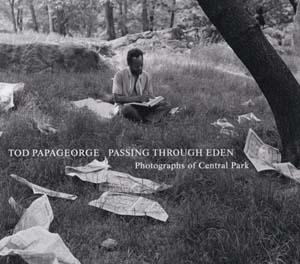
Papageorge's new book, Passing Through Eden: Photographs of Central Park (Steidl 2007), demonstrates his love for what he calls the "poetic image." The 105 photos included in the collection were taken from 1966-1992 and are mostly of people sitting on benches, reclining in the grass, and gathering. Papageorge's talent lies in his ability to capture a gesture, a pose or a juxtaposition of unrelated elements that suggests a relationship, and therefore, a story (or at least a comment): four men in stone-colored trench coats meander aimlessly, while at their feet, a group of pigeons do the same; a thin, barefoot man lies crumpled in the grass while some girls jump rope nearby; a young woman sunbathes in a bikini, her white skin luminous, and gestures to a white-haired, elderly woman resting in a wheelchair in the shade.
Since 1979, Papageorge has been the Walker Evans Professor of Photography at Yale University, where he also directs the graduate program in photography, and his aesthetic has influenced many of the strongest American photographers practicing today.
"Good photography transforms the world into a different thing," he explains, "just as putting words together to make a poem creates something new." ~
| Overviews: Books |
|
|
Not By A Long Shot: A Season at a Hard Luck Horse Track
by T.D. Thornton '90, Thornton, a journalist and racetrack announcer, has written a gritty, engaging narrative on the world of thoroughbred racing and East Boston's Suffolk Downs, including the lives and obsessions of the jockeys, trainers, owners and pressbox "degenerates." |
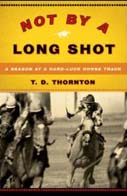 |
|
Beyond Buzz: The Next Generation of Word-of-Mouth Marketing
by Lois Kelly '77, Although aimed at marketing professionals, this book will interest any consumer curious about new marketing models in an age of MySpace, blogs and podcasting. |
 |
|
One for Sorrow, Two for Joy
by Elise Juska '97G, Juska's clever, charming third novel examines family dynamics as protagonist Claire Gallagher struggles to re-define herself in the wake of her mother's death and a failed marriage. |
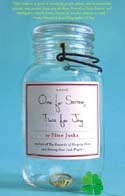 |
|
Also of Note... Ravenhill: A Novel by Timothy Hillmer '91G, Hillmer, who is a teacher and consultant for the Colorado Writing Project, knows that all sorts of desperate souls inhabit high schools. In his richly imagined second novel, which is told from multiple points of view, and takes place over the course of one day, he shows how that desperation can explode into violence. |
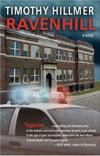 |
|
The Elusive Masterpoint
by Carl Vancelette '68, Vancelette learned how to play bridge at UNH in the '60s as a member of the TKE fraternity, and is now a seasoned tournament player as well as a bridge teacher. His knowledgeable, light-hearted book is constructed around 75 bridge hands that he played as he struggled to learn the game, and would be entertaining and inspirational for anyone who plays the game, or aspires to learn it. |
 |
|
Live Free, Drive Fast: Behind the Scenes at the New Hampshire International Speedway by Allen Lessels '76, This is the story of a season at New Hampshire's Speedway by someone who loves to go there. And, as Lessels shows, he isn't alone. He profiles racetrack owners, drivers and fans, and captures what draws thousands of people to the racetrack every year. As one of them says, "I just love it. I love the spectacle. I love the helicopters coming in. I love the color of it. The advertisements. The speed." |
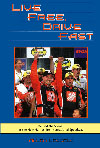 |
|
Double Nickels on the Dime by Michael T. Fournier '99, Fournier teaches the history of punk rock at Tufts University and writes about music for various publications. This book is one volume in the publisher's on-going "33 1/3" series—each volume takes a seminal album and unpacks it. Fournier's subject is the punk band, The Minutemen's double album, which was released in 1984. Fournier's book includes thoughtful readings of the lyrics, and interesting interviews with the musicians and their fans. He shows how the Minutemen "used the infrastructure and ethos of punk rock but were light years away from the scene's musical orthodoxy." |
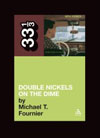 |
|
Black Kestrel: A Story of Madeira
by Don Silva '57, '65G, The author is professor emeritus from the Thompson School, and writes stories about the Madeira Islands (a group of islands off West Africa between the Azores and the Canary Islands) where his family has lived since the 15th Century; he delivers a public lecture annually at the Frederico de Freitas Museum in Funchal, Madeira. This novel takes place in the late 19th Century during the reign of King Dom Carlos, and examines the restrictive conditions that plagued young Madeiran Portuguese, who were subject to the church, the military and a feudal dictatorship. |
 |
|
Dichterliebe in Four Seasons
Soloist Jean Danton, pianist Thomas Stumpf, lyrics by Elizabeth Kirschner '79G, Albany Records, 2007, Robert Schumann's Dichterliebe song cycle was originally set to texts by German poet Heinrich Heine. In this recording, poet Elizabeth Kirschner, who has published three volumes of poetry with Carnegie University Press, has created a new set of texts that seeks to communicate with words what Schumann created in music: his tumultuous feelings about his relationship with Clara Wieck, who eventually became his wife.
|
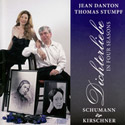 |
Anne Downey '95G, a freelance writer who lives in Eliot, Maine, received her Ph.D. in English from UNH.

